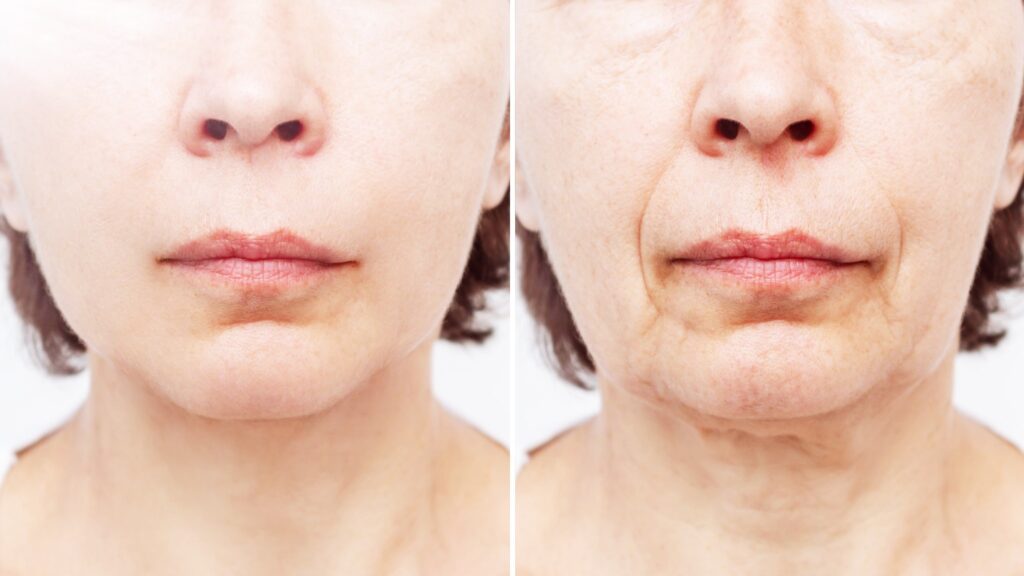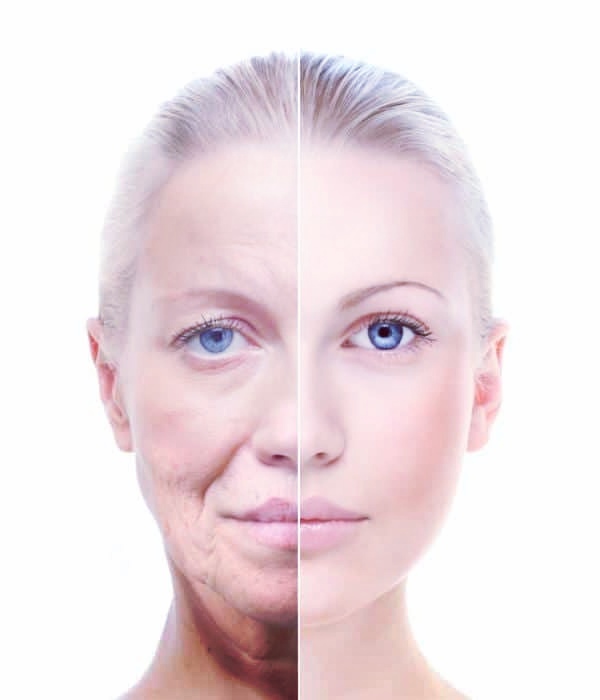Lift saggy skin causes and symptoms, 7 natural remedies

what is lift saggy skin, what causes the s and symptoms
Lift saggy skin, also known as skin laxity or skin drooping, is a condition where the skin loses its elasticity and becomes loose and saggy. This condition can occur in various parts of the body, such as the face, neck, arms, abdomen, thighs, and buttocks. It is a common issue that affects many people, especially as they age. In this article, we will explore the causes, symptoms, and treatment options for lifting saggy skin.
Causes of Lift Saggy Skin
The skin is the largest organ in the body and is made up of three layers: the epidermis, the dermis, and the subcutaneous layer. The dermis is the layer that contains collagen and elastin fibers, which provide the skin with strength and elasticity. As we age, the production of collagen and elastin fibers decreases, and the skin loses its elasticity, resulting in saggy skin.
Apart from aging, other factors can cause lift saggy skin. These factors include:
Genetics: Some people are more prone to skin laxity due to their genes. If your parents or other close relatives have saggy skin, you are more likely to develop it as well.
Weight fluctuations: Rapid weight gain or loss can cause the skin to stretch or shrink, which can result in saggy skin.
Sun damage: Exposure to the sun’s UV rays can damage the skin’s collagen and elastin fibers, resulting in saggy skin.
Smoking: Smoking can damage the skin’s collagen and elastin fibers and reduce blood flow to the skin, which can lead to skin laxity.
Poor diet: A diet lacking essential nutrients such as vitamins, minerals, and proteins can affect the skin’s health and elasticity.
Dehydration: Dehydration can cause the skin to lose its elasticity and become dry and saggy.
Symptoms of Lift Saggy Skin
The symptoms of lifted saggy skin vary depending on the affected area of the body. However, some common symptoms include:
Loose or saggy skin that appears wrinkled or crepey
Skin that appears thin and fragile
Skin that is less firm and appears to have lost its elasticity
Skin that sags and droops, especially in the face, neck, arms, abdomen, thighs, and buttocks.
Stretch marks
Cellulite
Skin that appears dimpled or lumpy
These symptoms can affect a person’s self-esteem and confidence, leading to a negative body image.
Treatment options for Lift Saggy Skin
There are several treatment options available for lifting saggy skin. These treatment options range from non-invasive to invasive procedures, depending on the severity of the skin laxity.
Non-invasive treatments: Non-invasive treatments are suitable for mild cases of lifted saggy skin and include the following:
- a) Topical creams: Topical creams containing retinoids, vitamin C, and alpha-hydroxy acids can improve the skin’s texture, firmness, and elasticity.
- b) Chemical peels: Chemical peels remove the top layer of dead skin cells, stimulating collagen production and improving the skin’s texture and tone.
- c) Microdermabrasion: Microdermabrasion involves using a special device to exfoliate the skin and improve its texture and tone.
- d) Laser treatments: Laser treatments can stimulate collagen production and tighten the skin’s surface, resulting in improved texture and tone.
Invasive treatments: Invasive treatments are suitable for more severe cases of lift saggy skin and include the following:
- a) Surgical facelift: A surgical facelift involves removing excess skin and tightening the underlying muscles and tissues to restore a more youthful appearance
Natural remedies for skin saggy
In addition to medical and cosmetic treatments, several natural remedies can help improve the appearance of saggy skin. These remedies can be used in conjunction with medical treatments or on their own, depending on the severity of the skin laxity.
Exercise: Regular exercise can help tone and firm the muscles underlying the skin, which can help improve the appearance of saggy skin. Exercise also increases blood flow to the skin, promoting collagen production and improving skin elasticity.
Diet: A diet rich in antioxidants, vitamins, and minerals can help improve skin health and elasticity. Foods that are high in vitamin C, vitamin E, and zinc, such as citrus fruits, nuts, seeds, and leafy green vegetables, can help promote collagen production and improve skin elasticity.
Hydration: Drinking plenty of water can help keep the skin hydrated and improve its elasticity. Dehydration can cause the skin to appear dry and saggy, so it’s important to drink at least eight glasses of water per day.
Massage: Massaging the skin can improve blood flow and promote collagen production, which can help improve the appearance of saggy skin. Using a firm circular motion, massage the skin with natural oil, such as coconut oil, for several minutes each day.
Skin-tightening masks: Applying a skin-tightening mask can help improve the appearance of saggy skin. Mix one egg white with one teaspoon of honey and apply the mixture to the face or other affected areas. Leave the mask on for 10-15 minutes and rinse with warm water.
Essential oils: Essential oils such as frankincense, lavender, and rosemary can help promote collagen production and improve skin elasticity. Mix a few drops of essential oil with carrier oil, such as coconut oil, and apply the mixture to the skin each day.
Sun protection: Protecting the skin from sun damage can help prevent saggy skin. Use broad-spectrum sunscreen with an SPF of at least 30 and wear protective clothing, such as a hat and long-sleeved shirt, when spending time outdoors.
It’s important to note that natural remedies may not work for everyone, and their effectiveness may vary depending on the severity of the skin laxity. It’s always best to consult with a dermatologist or other healthcare professional before trying any new treatments or remedies for saggy skin.
the best exercise for skin saggy

There is no single best exercise for saggy skin, as the most effective exercises for improving skin elasticity and reducing skin laxity can vary depending on the individual’s age, overall health, and fitness level. However, incorporating regular exercise into your daily routine can help improve muscle tone and reduce the appearance of saggy skin.
Strength training exercises that target the major muscle groups of the body, such as the chest, back, arms, and legs, can help build muscle mass and improve skin elasticity. Examples of strength training exercises include push-ups, lunges, squats, and weightlifting.
Cardiovascular exercises, such as jogging, cycling, swimming, and dancing, can help improve circulation and promote collagen production, which can improve skin elasticity and reduce the appearance of saggy skin.
In addition to strength training and cardiovascular exercise, practicing yoga or Pilates can help improve muscle tone and flexibility, which can improve the appearance of saggy skin. Certain yoga poses, such as the plank pose, downward-facing dog, and triangle pose, can help tone the muscles of the arms, legs, and core, which can help improve overall body tone.
Ultimately, the best exercise for saggy skin is one that you enjoy and can stick to over the long term. Consistency and dedication are key when it comes to improving skin elasticity and reducing skin laxity through exercise. It’s important to consult with a healthcare professional or certified personal trainer before starting any new exercise program, especially if you have a history of medical conditions or injuries.
sagging skin be firm again
sagging skin can be firmed up again, but the degree to which it can be improved depends on several factors, including the individual’s age, overall health, and the severity of the skin laxity.
As we age, our skin loses elasticity and collagen, which can lead to sagging skin. However, there are several treatments available that can help improve skin elasticity and firm up sagging skin.
Medical treatments such as radiofrequency therapy, ultrasound therapy, and laser resurfacing can help stimulate collagen production and improve skin elasticity. These treatments work by delivering energy to the skin, which heats the underlying tissue and triggers a healing response, leading to increased collagen production and skin tightening.
Cosmetic procedures such as facelifts, neck lifts, and body lifts can also help firm up sagging skin. These procedures involve removing excess skin and tightening the underlying muscles and tissue, resulting in a firmer, more toned appearance.
In addition to medical and cosmetic treatments, lifestyle changes such as regular exercise, a healthy diet, and avoiding sun damage can also help improve skin elasticity and firm up sagging skin. Exercise can help tone and strengthen the muscles underlying the skin, while a healthy diet rich in antioxidants, vitamins, and minerals can help promote collagen production and improve skin health.
While it may not be possible to completely reverse the effects of aging on the skin, several treatments and lifestyle changes can help improve skin elasticity and firm up sagging skin. It’s important to consult with a healthcare professional or certified dermatologist to determine the best treatment options for your individual needs.
food is best for skin tightening

Certain foods contain nutrients that can help improve skin elasticity and tighten sagging skin. Here are some of the best foods for skin tightening:
Foods rich in vitamin C: Vitamin C is essential for collagen production, which can improve skin elasticity and firmness. Foods rich in vitamin C include citrus fruits, strawberries, kiwis, papayas, bell peppers, and broccoli.
Foods rich in protein: Protein is important for building and repairing tissues, including skin tissue. Foods rich in protein include lean meats, fish, eggs, beans, and lentils.
Foods rich in omega-3 fatty acids: Omega-3 fatty acids can help improve skin health and elasticity by reducing inflammation and promoting collagen production. Foods rich in omega-3 fatty acids include fatty fish such as salmon, tuna, and sardines, as well as flaxseeds, chia seeds, and walnuts.
Foods rich in antioxidants: Antioxidants can help protect the skin from damage caused by free radicals and improve skin health and elasticity. Foods rich in antioxidants include berries, dark chocolate, green tea, and leafy green vegetables such as spinach and kale.
Foods rich in sulfur: Sulfur is essential for collagen production and can help improve skin elasticity. Foods rich in sulfur include garlic, onions, and cruciferous vegetables such as broccoli, cauliflower, and Brussels sprouts.
Foods rich in vitamin A: Vitamin A can help improve skin health and elasticity by promoting collagen production and reducing the breakdown of collagen. Foods rich in vitamin A include sweet potatoes, carrots, spinach, and kale.
In addition to these foods, it’s important to stay hydrated by drinking plenty of water and limiting your intake of processed and sugary foods, which can contribute to inflammation and damage to the skin. By incorporating these foods into your diet and maintaining a healthy lifestyle, you can help improve skin elasticity and tighten sagging skin.
drink tightens skin
Drinks that are rich in antioxidants, vitamins, and minerals can help improve skin health and promote skin tightening. Here are some of the best drinks that can help tighten the skin:
Green tea: Green tea is rich in antioxidants called catechins, which can help protect the skin from damage caused by free radicals and improve skin elasticity. Drinking green tea regularly can also help reduce inflammation, which can contribute to sagging skin.
Water: Staying hydrated is essential for maintaining skin health and elasticity. Drinking at least 8 glasses of water per day can help keep the skin hydrated, plump, and firm.
Aloe vera juice: Aloe vera is rich in vitamins and minerals that can help improve skin health and tighten sagging skin. Drinking aloe vera juice regularly can also help reduce inflammation and promote collagen production.
Coconut water: Coconut water is rich in potassium, which can help keep the skin hydrated and improve skin elasticity. Drinking coconut water regularly can also help reduce inflammation and promote skin health.
Tomato juice: Tomatoes are rich in lycopene, an antioxidant that can help protect the skin from damage caused by UV rays and improve skin elasticity. Drinking tomato juice regularly can also help reduce inflammation and improve overall skin health.
Beet juice: Beets are rich in antioxidants, vitamins, and minerals that can help improve skin health and promote skin tightening. Drinking beet juice regularly can also help improve blood flow, which can promote collagen production and improve skin elasticity.
It’s important to note that while these drinks can help improve skin health and promote skin tightening, they should be consumed as part of a balanced diet and healthy lifestyle. Additionally, it’s always best to consult with a healthcare professional before making any significant changes to your diet or lifestyle.
the vitamin that tightens skin
Collagen is the main structural protein in the skin, and it plays a vital role in skin elasticity and firmness. Vitamin C is a critical nutrient for collagen production, and it can help tighten the skin by promoting collagen synthesis. In addition to Vitamin C, some other vitamins and nutrients can help promote skin tightening, including:
Vitamin A: Vitamin A plays a critical role in skin health, and it can help improve skin elasticity by promoting collagen production and reducing the breakdown of collagen.
Vitamin E: Vitamin E is an antioxidant that can help protect the skin from damage caused by free radicals and promote skin health and elasticity.
Vitamin B3 (Niacinamide):
Vitamin B3 can help improve skin elasticity by promoting collagen production and reducing inflammation.
Zinc:
Zinc is essential for skin health and can help improve skin elasticity by promoting collagen production and reducing inflammation.
Copper:
Copper is a mineral that plays a critical role in collagen synthesis, and it can help improve skin elasticity and firmness.
It’s important to note that while these vitamins and nutrients can help improve skin health and promote skin tightening, they should be consumed as part of a balanced diet and healthy lifestyle. Additionally, it’s always best to consult with a healthcare professional before taking any supplements or making significant changes to your diet or lifestyle.

















